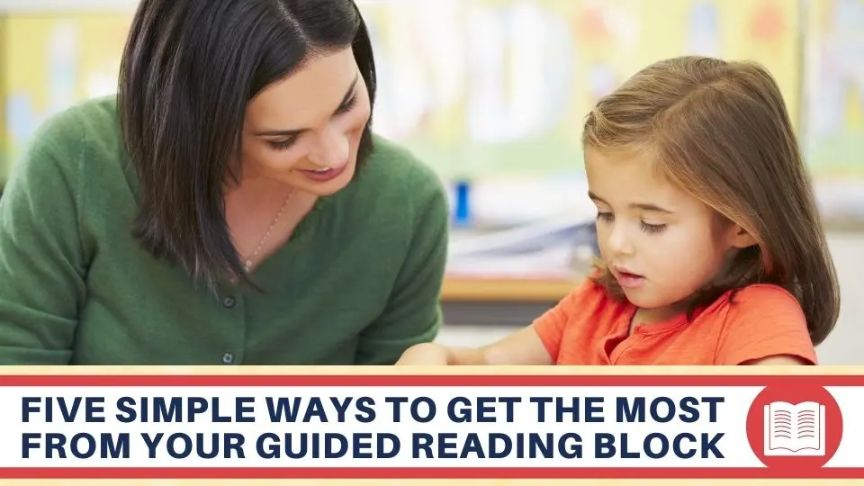
What is your guided reading routine? How do your lessons connect? Is there flow from whole group to small group to work stations? Today, I’m going to share five little tricks to help you get the most out of your guided reading block.
Teach Beyond the Basal
Let’s start with the whole group section of your ELA block. How is it structured? Do you typically teach from a Smartboard, use a basal reader, or work from the carpet? Which is best? So many teachers wonder with so much content to teach, how to manage it all. Additionally, you may hear different directives from administrators which leaves you feeling unsure of which is preferred.
Use Your Basal as a Starting Point to Plan for Guided Reading
Sure, there are times when you find a great story in the basal that your kids really do enjoy, but using the basal from cover to cover is honestly not that motivating. My advice would be to use it as your framework unless your division has provided a pacing guide. If your pacing guide lists it as an option, then it is simply that, an OPTION. What if you could teach the same skill with a better piece of literature? What if you have an amazing interactive lesson you’ve created for the Smartboard for modeling?
As teachers, we know best what will meet our students’ needs, and if we have the ability to make the choice for what is best, then we have the obligation to do so. The basal may be easier for us to use, but it may not be best for meeting the needs of your students especially if they are well below or well above level.
Connect Your Whole Group Lessons to Guided Reading Lessons
If you have been following my blog, there is probably no question as to how I feel about thematic teaching and the importance of making lessons connect. Now, in my division, this is an expectation. We are asked to have a common thread as we move from whole group to small group and then to stations. If visualizing is the skill taught in a whole group setting, it is practiced in small group and independently practiced in the work station. As we select materials, we can increase retention of concepts if the materials are on a common theme.
Develop Your Guided Reading Routine
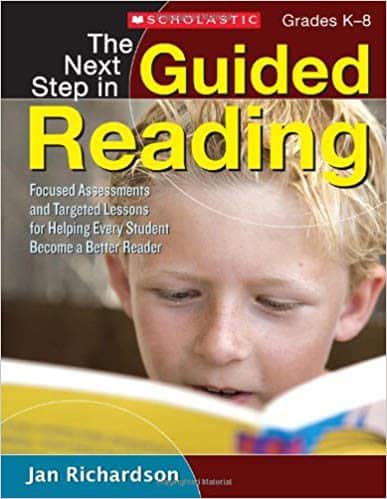
If you haven’t read, The Next Step in Guided Reading by Jan Richardson, you should add it to your list. She shares recommendations for the lesson routine, stations, progress monitoring, and so much more. Your small group time is sacred, and you must protect this part of the schedule no matter what.
As you work with your students, you’ll want to structure the routine in a way that allows the maximum amount of reading and the maximum amount of real engaged work. Your primary job during the small group lessons time is to model (again…keep your talk to the minimum), cue as needed, and most importantly, watch your students.
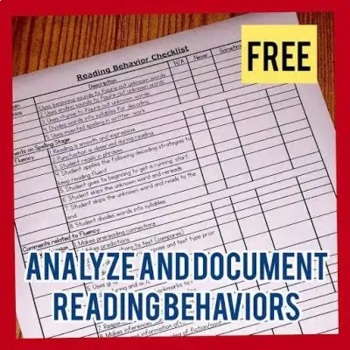
Minimize Teacher Talk
You may not have realized it yet, but I’m a talker. I love to talk. I especially love talking about teaching, so I guess blogging is a great outlet. Otherwise, I might drive my family and friends nuts! For us talkers, it is tough to turn it off, you know. Well, this does not work for a small group lesson that lasts just 20 minutes. The more you talk, the less reading and work the kids do. So, to help yourself with it, keep tally marks for each time you talk. Count them up and try to work the number down.
Match Guided Reading Books to Your Students’ Reading Levels
I’m not talking about your wardrobe here. I’m talking about fit. Make sure that the books you choose are a good fit for the group you’re teaching. Good fit means interest, level, and matches your need. If you need to teach nonfiction text features, and you select a fairy tale, you are not going to be able to meet your objective. This means you need to plan with intention. Know before you go pull books what skills you plan to teach, what level your kids are reading at, and what they’re interested in. If we make great matches in our guided reading groups, our students will turn to us for advice on what to read independently too.
other guided reading posts:
- 5 SIMPLE STEPS TO ORGANIZE YOUR GUIDED READING GROUPS
- 3 ESSENTIAL WAYS TO ORGANIZE YOUR GUIDED READING BLOCK
- USING BOOK CLUBS WITH ELEMENTARY READERS TO INCREASE READING ENGAGEMENT
Remember Your Guided Reading Time is Sacred
Make sure your students know it and that you value their growth as readers. With careful attention to materials, setting, instructional practices, and motivation, your kids are sure to grow LOTS of dendrites and LOVE reading.

Pin for Later:
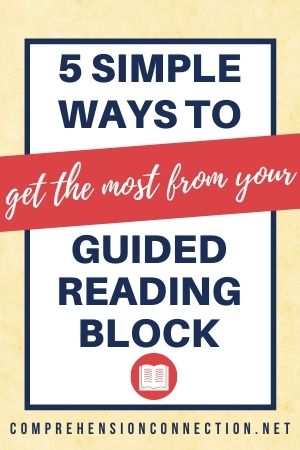
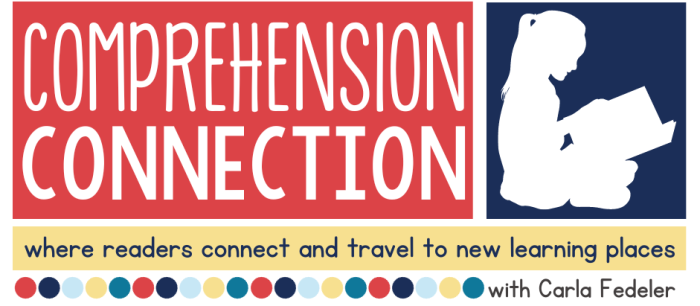


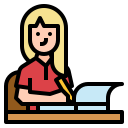



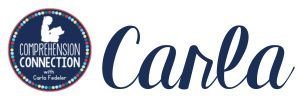







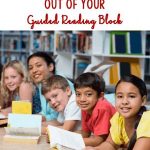

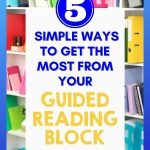
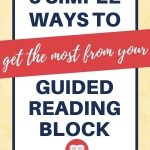
One Response
AWESOME tips, Carla!
The Techie Teacher